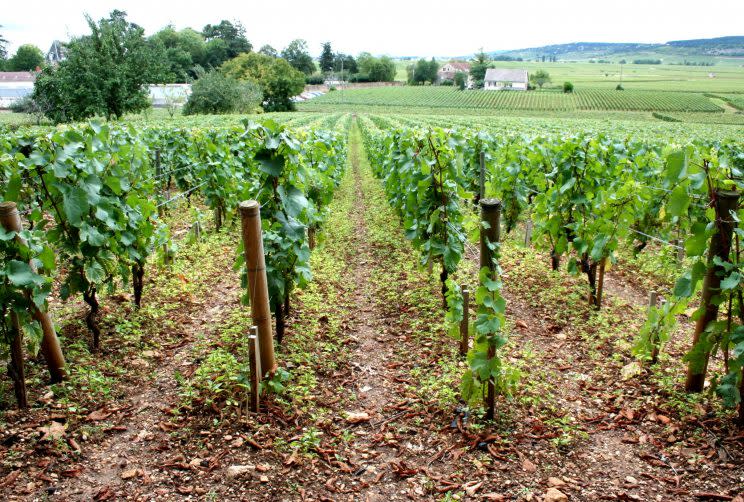Treasured Burgundy vineyards are at risk due to late frost

For the last two nights the custodians of some of the most treasured and valuable vineyards in the world have battled to protect their precious charges from a potentially devastating late frost. A similar bout of sub-zero temperature last April stole nearly a third of the region’s 2016 vintage, with the unluckiest vintners losing as much as 70% of their crops in what was reportedly the worst gelée, as they’re called, in 30 years.
As of Thursday, though, this year’s toll appeared modest.
“Hopefully the damage is far from last year’s,” wrote Cécile Mathiaud in an email, though she warned that more cold weather was expected tonight and “we won’t have a specific image of what happened before next week.” Mathiaud is the spokesperson for the Burgundy Wine Board, or BIVB (Bureau Interprofessionnel des Vins de Bourgogne), a trade association of more than 4,000 wine growers and merchants.
Burgundy produces some of the world’s most expensive wines. In 2015 a Romanée-Conti Grand Cru DRC was averaging about $138,000 per bottle at auction. Burgundies and Bordeaux tend to dominate the wine auction markets. The region comprises only about 70,000 acres of vineyards, producing a modest 180 million bottles per year, representing just 0.4% of the world’s wine production by bulk.
The areas of Burgundy most affected by the frost, Mathiaud said, were Chablis, Côte de Beaune and Côte de Nuits. Spring frosts are common in Chablis, she continued, so vintners there are prepared to stay awake and artificially warm their best parcels of land, known as climats—the ones that produce the best quality wines, known as premiers and grands crus. The growers have been aided by windy, dry weather, which is less dangerous to early vine leaves and buds than humid, stagnant air during a freeze.

Though there has been damage in the Côte de Beaune and Côte de Nuits, it has been localized, Mathiaud reported, confined mainly to the bottom of slopes and back valleys. Chardonnay grapes, used for white burgundies, are generally more at risk than pinot noir, the most common grape for red burgundies, she said, because the latter is slower to sprout leaves and buds.
Is there any concern that man-made climate change may be increasing the danger presented by Spring frosts? Mathiaud said that the Spring frosts themselves are not new, especially in Chablis. What is new, she wrote, is that “the plant is waking up earlier,” i.e., pushing out leaves and buds, so that the plant is at a more vulnerable stage when frost does strike.
To ward off a frost, some vintners warm their vines by lighting large, wax-filled, barrel-like brasiers, placed three meters apart, throughout the fields. Others blow warm air through the vines with small windmills or even helicopters, she said. Still others use an expensive technique that involves spraying water on buds to form a frozen pouch that, counterintuitively, can protect them from the frost. (A Spring frost can both prevent grapes from developing and lower the quality of those that do.)
“We all have in mind last year’s frost,” Mathiaud noted, “and fear to relive it. So we are very touchy and precautious.”
Roger Parloff writes about law and business.
More from Roger Parloff:

 Yahoo Finance
Yahoo Finance 